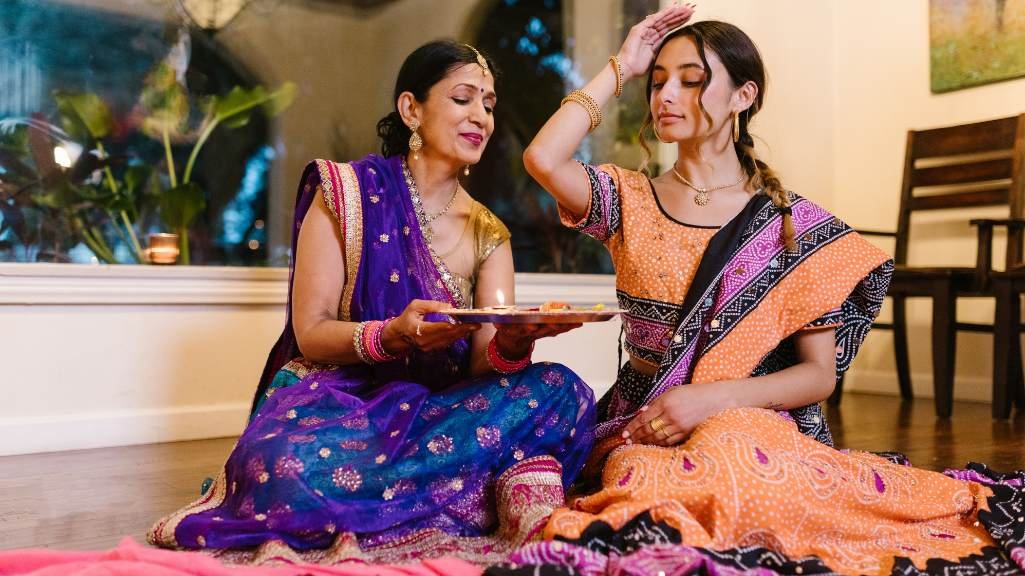The Timeless Elegance of Sarees for Weddings: A Guide for Brides and Guests
Swati Mandana
. 2 min read
Sarees have been an integral part of Indian weddings for centuries, exuding grace, charm, and tradition. Whether you're a bride, bridesmaid, or a guest attending a wedding, the saree, along with modern fashion apps, offers endless possibilities to showcase your personal style and celebrate the joyous occasion. In this article, we delve into the world of sarees for weddings, exploring the different styles, fabrics, colors, and embellishments to help you make the perfect choice with the assistance of these innovative apps.

The World of Sarees for Weddings
1. Traditional Saree Styles:
a. Kanjivaram Silk Sarees: Known for their rich and vibrant colors, heavy golden borders, and intricate motifs, Kanjivaram silk sarees from Tamil Nadu are a popular choice for brides. They exude grandeur and elegance, making them ideal for traditional wedding ceremonies.
b. Banarasi Silk Sarees: Hailing from Varanasi, Banarasi silk sarees are renowned for their opulent zari work and intricate designs. These sarees are often woven with gold or silver threads, making them a splendid choice for weddings and other festive occasions.
c. Paithani Silk Sarees: Originating from Maharashtra, Paithani sarees are known for their striking color combinations and exquisite peacock motifs. These sarees are characterized by their luxurious silk fabric and intricately woven borders, making them a favorite for Maharashtrian brides.
2. Contemporary Saree Styles:
a. Designer Sarees: Designers often blend traditional aesthetics with modern elements, creating unique sarees that cater to the evolving preferences of brides. These sarees may feature unconventional draping styles, contemporary patterns, and innovative embellishments, offering a fusion of tradition and modernity.
b. Half and Half Sarees: Half and half sarees feature two contrasting or complementary fabrics, colors, or designs divided at the pleats. They offer a contemporary twist to the classic saree, creating a visually appealing look that suits various wedding events, from sangeet to receptions.
c. Floral Print Sarees: Perfect for daytime weddings or garden ceremonies, floral print sarees offer a refreshing and vibrant choice. These sarees feature delicate floral motifs or bold blooms, adding a touch of freshness and femininity to your ensemble.
3. Fabrics and Embellishments:
a. Fabrics: Apart from silk, sarees for weddings are crafted in a variety of fabrics like georgette, chiffon, net, organza, and crepe. Each fabric has its own unique drape, texture, and appeal, allowing you to select the one that suits your comfort and style preferences.
b. Embellishments: Embroidery, zari work, sequins, stones, and mirror work are commonly used embellishments on wedding sarees. These intricate details add a touch of glamour and sparkle, enhancing the overall beauty of the saree.
Colors and Combinations:
While red and gold have traditionally been popular colors for bridal sarees, modern brides are embracing a wider color palette. Shades like pastels, deep jewel tones, and even unconventional colors like mint green, blush pink, and lavender are making their way into wedding sarees. Experimenting with color combinations and contrasts can help create a unique and eye-catching look.
Conclusion
Sarees hold a special place in Indian weddings, symbolizing grace, tradition, and beauty. Whether you opt for a traditional silk saree or a contemporary designer creation, there is a myriad of options to suit your personal style and the occasion's tone. Embrace the elegance of sarees and let them weave their magic as you celebrate love, joy, and togetherness on your special day or as a guest witnessing the union of two souls.
More Stories from
Dapper Dudes: Mastering Men's Fashion and Style with Essential Tips and Tricks
This article provides essential rules and guidelines for men's style, including tips on suit wearing, shirt and tie combinations etc.
The Future of Fashion: A Sustainable Approach to Clothing Design
This article provides various fashion tips and hacks for men to improve their style and appearance.
Finding the Perfect Engagement Ring: Style and Affordability Unite
This article offers valuable insights on how to choose a stylish and affordable ring that complements your partner's taste and fits your budget.
Fashion Blogging: Unleashing Your Style and Creativity Online
Discover the rise of fashion blogging, its powerful influence on the fashion industry, and how to start your own blog.
The Timeless Elegance of Blazers for Weddings: A Perfect Choice for Grooms
Explore the allure of blazers for weddings in this article, as we delve into their features, styling options, and why they have become a favored choice among discerning grooms.









.png?width=40&aspect_ratio=1:1)
